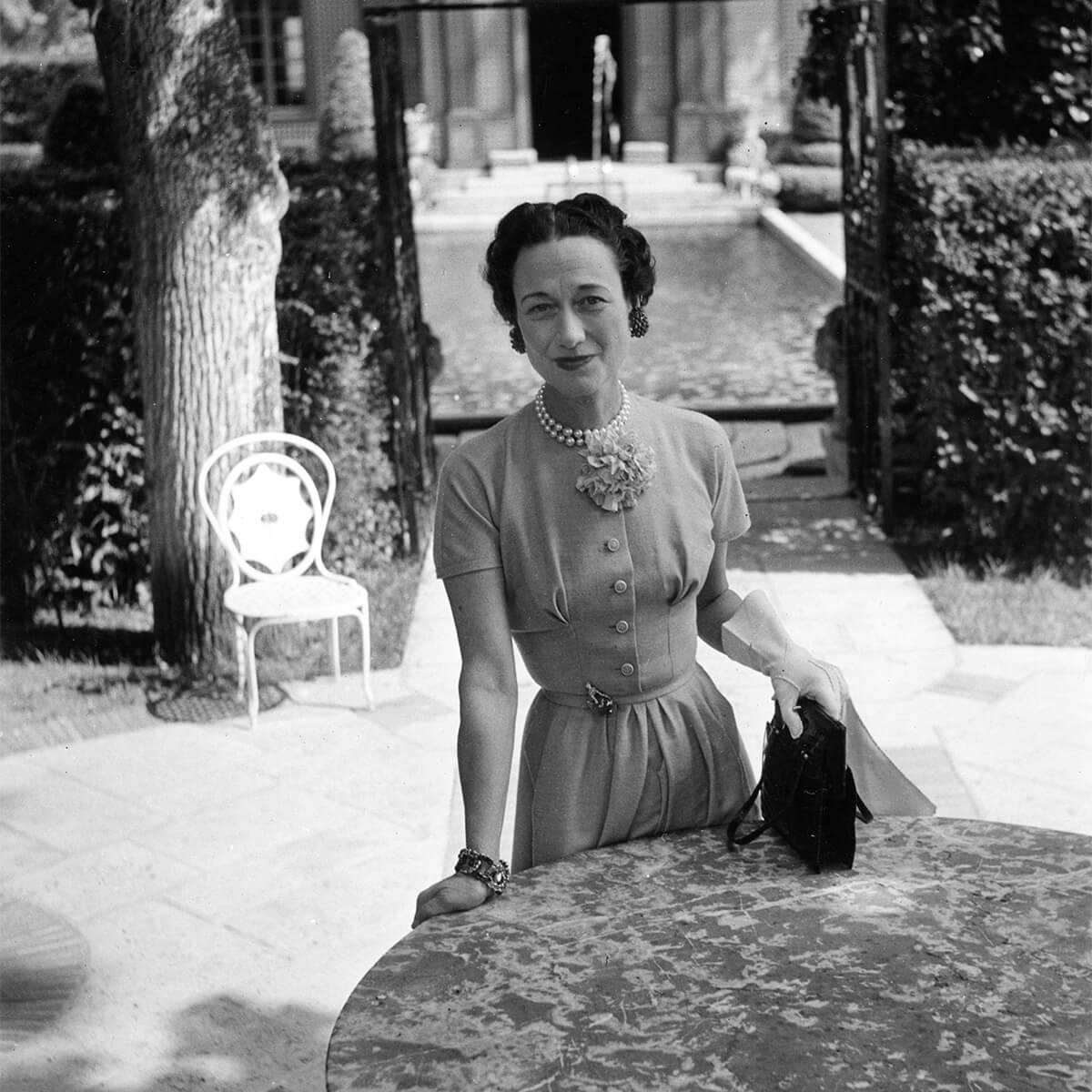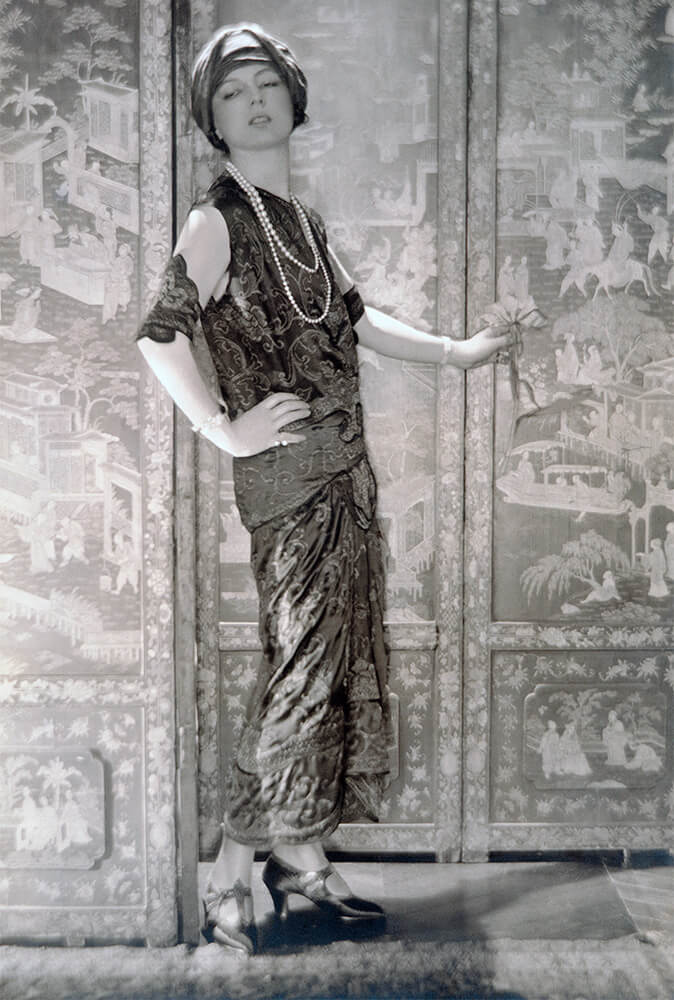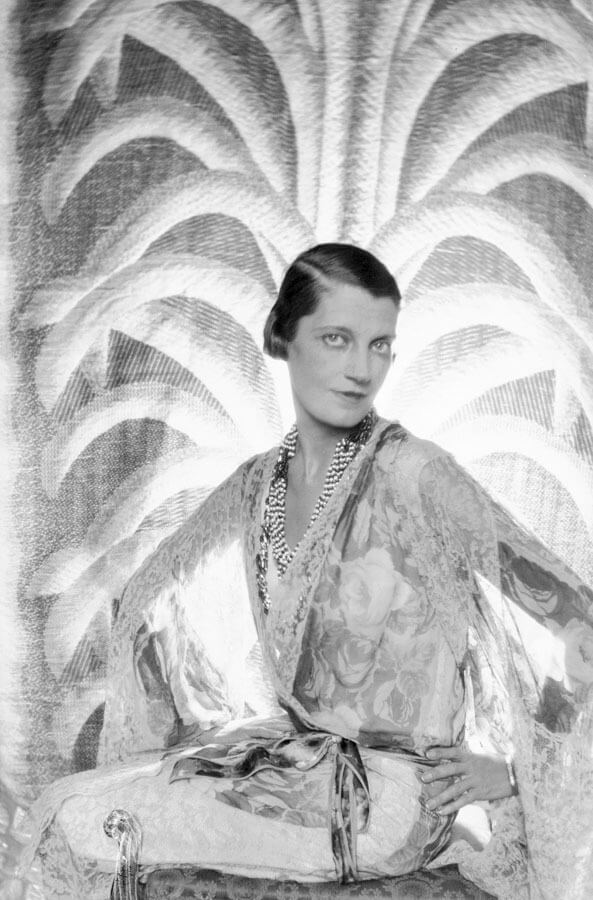Why Is The Panther Cartier’s Pet Animal? Thank Jeanne Toussaint
by Sabrina Doerr
Anyone who knows anything at all about French jewelry and watch brand Cartier has heard of one of its most famous collections, the Panthère de Cartier.
Cartier is well-known for its Art Deco pieces and love of exploring the aesthetics of wild beasts, however that still doesn’t fully explain why the century-old Panthère collection became as iconic as it is today.
However, every brilliant thing has a beginning – and this brilliant thing got its start in 1914 . . . with a painting.
At this point in time, Louis, Jacques, and Pierre Cartier were managing the company. Cartier was founded in 1847 by the trio’s grandfather, Louis-François Cartier, and it was passed down to Louis, Jacques, and Pierre through their father, Alfred.
Impressed with his work, Louis asked French painter George Barbier to create a watercolor painting in 1914. Louis planned to use it for an invitation to a Parisian jewelry exhibition. He ended up liking the painting so much that from then on, it has been in continuous use by Cartier as brand advertising.
The painting, Dame à la panthère, depicts an elegantly dressed woman with a panther at her feet. This moment in Cartier history marks the first use of an animal at the company, and it is this painting that essentially kicked off the panther theme.
The reason for placing a panther at the woman’s feet is shrouded in a bit of mystery, but Cartier expert Geo Cramer has a possible answer. “At the beginning of twentieth century, big cats were en vogue for expressing femininity – in fact, the beast was seen as the ultimate expression of femininity,” he explains.
Later that same year, the first piece of panther jewelry by Cartier came into existence: a watch designed to look like the spotted coat of one of the magnificent felines. More ladies’ watches utilizing the panther theme were soon to follow.

Cartier Panther Art Deco platinum wristwatch from 1914 with panther spots in onyx and rose-cut diamonds; it boasts a diameter of 24.6 mm
The first Panther was a watch
The signature mottled motif of the Montre Panthère (Panther Watch) was achieved by speckling black onyx among pavé-set diamonds to represent the pattern of a panther’s coat. One year later, a brooch-type watch was created using the same pattern. It ended up being sold to Pierre Cartier, who was at the time director of Cartier New York.
The panther was fully depicted for the very first time on a vanity case owned by Jeanne Toussaint, a woman who has been called called the Coco Chanel of jewelry and who served as style inspiration for some of Louis Cartier’s designs. In fact, Cramer thinks Toussaint may also have been the co-inspiration for the panther appearing in Barbier’s painting. “It is possible that Jeanne Toussaint was the first woman to wear a coat made of panther fur in Paris,” he hypothesizes.
A working relationship between Jeanne Toussaint (1887-1976) and Louis Cartier began when she was 31. Cartier was awed by her beauty, carefree spirit, and aura of grandeur. Toussaint, already familiar with decorative arts, was designing popular handbags at the time. Louis admired her skill and taste and enticed her to join Cartier.
Toussaint also played a large part in making the Panthère de Cartier collection the icon it was to became. By all accounts, she more or less summed up its essence – which earned her the nickname “La Panthère” – thanks to her personality and feminine style that Louis Cartier found so intriguing. He hired her as head of Cartier’s accessories department the same year he met her.

Cartier Panther brooch from 1963 in platinum, onyx, diamonds, and emerald (eyes); the head and joints are articulated
Jeanne Toussaint
Toussaint quickly grew to be respected and admired within the company, becoming known for her exquisite style, which included mixing patterns, but making it work in a very classy way.
This marvelous eccentricity was not just seen in her clothing; by Cartier’s accounts her apartment was very similar: modern-looking, but with careful use of antique and rare furniture.

This panther from 1949 in platinum and white gold with two pear-cut yellow diamonds for eyes boasts a 152.35-ct sapphire cabochon; it was the second three-dimensional panther made for the Duchess of Windsor
Artistically speaking, Toussaint was very knowledgeable and had an excellent eye, allowing her to combine the right items in order to achieve just the right look she was going for. She also had a passion for what she was doing and was inspired by other cultures. Toussaint clothes and apartment were her way of expressing her personality, and it worked well for her.
One culture that largely influenced Toussaint was India. She loved to incorporate Indian fashions, which were not en vogue in Europe at the time, into her ideas – for example by utilizing yellow gold, clusters of gemstones, flower motifs, and brooches, all of which were very colorful. The use of semi-precious stones such as coral also contributed to this “foreign” effect.
At Cartier, Toussaint came up with many brilliant designs, such as perfume in a bottle faceted like a diamond and – an especially memorable design of hers – a brooch representing a colorful bird imprisoned in a cage. Four years later, she created another one of these, this time of a singing bird in an open cage. It was called Oiseau libéré (“Liberated Bird”).
In 1927, a designer named Peter Lemarchand joined Cartier’s team. Very skilled, he observed panthers at the zoo until he, working together with Toussaint, was able to do them justice.
Lemarchand played a large part in making the panther the legend for Cartier that it is today. Around this time, the first brooches fully representing the animals (again made of diamonds and onyx, but now depicted on the full creature) began appearing.
In 1933, Jeanne Toussaint was appointed director of fine jewelry at Cartier.
High society admirers
Throughout the years, many celebrities and high society personalities, including nobility, became admirers of the ever-growing Panthère de Cartier collection. This listing has prominently included María Félix (1914-2002), a Mexican actress nicknamed The Mexican Panther. In 2005, Cartier actually dedicated a watch to Félix dubbed La Doña, another one of her nicknames.

Mexican actress María Félix in 1967 wearing an articulated Panthère de Cartier brooch and a double-headed panther bracelet in platinum, onyx, and diamonds with emeralds for eyes
American heiress Barbara Hutton may have preferred the yellow diamond and onyx tiger designs, but it didn’t stop her from purchasing the panther designs, too.
Toussaint managed to win over many important and influential clients thanks to her unique fashion insights.
One of the most significant fans of Cartier was the Duchess of Windsor, otherwise known by her “common” name Wallis Simpson. In 1948, her third husband, Prince Edward, Duke of Windsor, asked Cartier to create a three-dimensional panther brooch for his wife.

The Duchess of Windsor (Wallis Simpson) in 1949 at Villa Trianon in Versailles; note the panther brooch boasting the 152-carat sapphire cabochon pinned to the belt of her dress
The brooch consisted of a yellow gold panther speckled with black enamel stretching out on a 90-carat cabochon-cut emerald. At the time, the Duchess of Windsor was thought of as being one of the most elegant women in fashion in the world, and therefore she helped along the popularity of the panther immensely.
This brooch also marked a milestone in the history of the Panthère de Cartier: it was the first time the feline was represented in three dimensions, an important step for the brand’s famous line of jewelry.
One year later, in 1949, the Windsors bought another three-dimensional panther brooch made of diamonds and onyx and mounted in platinum, this time resting on a very special 152-carat sapphire cabochon. A big fan, the Duchess of Windsor acquired many more pieces from the Panther collection over the following years.
Daisy Fellowes, socialite, heiress, and Paris editor of American fashion magazine Harper’s Bazaar, was likewise a panther fan. She bought a diamond-and-sapphire brooch representing the feline hanging in the position of the sheep in the classic story of the Golden Fleece.
Articulated wild cats
Articulated representations of wild cats on bracelets, brooches, and more were becoming increasingly popular, and in 1958 the Panther caught the attention of Princess Nina Aga Khan (née Nina Dyer, an Anglo-Indian fashion model married to Prince Sadruddin Aga Khan).
Her husband, the Aga Khan, immediately acquired several more items from the Panthère de Cartier collection for her, including an articulated panther brooch, a bracelet with ends shaped like panther heads, and a similarly designed fluted gold bracelet, the heads of which could be worn as earrings. The bracelet could be used as the handle for an “metamorphosis” evening bag in, another breakthrough concept for Cartier.
Jeanne Toussaint died in 1978, but the beautiful beast she brought into Cartier’s collection lives on today and is constantly being reinvented.
A holder of the Grand Croix of the Legion of Honor, Toussaint has had a major influence on fashion. Pierre Claudel, the husband of Marion Cartier (Pierre Cartier’s daughter) and the son of writer Paul Claudel, described her as having “guided jewelry to modernity without ever sacrificing good taste to pure commercial interests.” That’s quite a difficult thing to pull off.
The modern era
In 1983, Cartier launched another Panther watch, which was very similar to the previously released Santos de Cartier, but differentiated by flat gold links that increased flexibility, making it even more realistically panther-like. This was very popular and the watch is recognized as a success even today.

Cartier Large Model Tortue with panther stone mosaic dial from SIHH 2015; an incredible work of art limited to just 30 pieces
Cartier has continued to launch more panther designs throughout the years and in 2009, the brand incorporated the majestic snow panther into its jewelry.
In 2014, Cartier celebrated the 100-year anniversary of Panthère de Cartier, in honor of which a 56-piece set of jewelry was launched and a grand exhibition of “Cartier style” went on show at Paris’ Grand Palais.
Though it is nearly impossible to express the Cartier Panther’s allure in mere words, one glance at Jeanne Toussaint is perhaps all you would need.

Ronde Louis Cartier XL with filigree panther motif from SIHH 2015; fine artisanal work with 22-carat yellow gold limited to just 20 pieces
She boasted many of the same features as Cartier’s trademark feline does, but perhaps the most intriguing aspect of both of these characters is their uncanny abilities to combine a mysteriously compelling and raw sense of danger with a pure, fascinating, and refined aura of feminine elegance. This is something that Louis Cartier evidently recognized when he decided to offer Toussaint a position at the company his grandfather founded.

A high jewelry Cartier panther watch from SIHH 2015 with removable panther to be worn if desired as a brooch
And these very traits are what I believe make up the Panthère de Cartier’s charm and seductiveness. Wearing a piece of the famous panther jewelry allows you to feel wild and untamed while still retaining a high level of class and luxurious sophistication thanks to the beast’s diamond fur, black onyx spots, and signature emerald eyes – as well as its poise and, later, its flowing movement.
In these ways the panther embodies many of the same traits that Cartier the brand represents: impressive, luxurious, enticing.

SIHH 2015: Rêves de Panthères with ultra-feminine day/night indication in a 42 mm white gold case powered by automatic Cartier Caliber 9916 MC
Furthermore, the panther is a symbol of femininity, a fierce, independent type of femininity that was new to the world when the Panthère de Cartier was created. Beginning with a wristwatch of all things – a fashion item for forward-thinking females at that time – and soon after becoming a symbol of strong, confident and, most of all, free and wild women (as proven by the many famous followers of the collection), largely, of course, thanks to the influence of Jeanne Toussaint, “la panthère.”

Rotonde de Cartier watch with damascened panther motif from SIHH 2015: this 50-piece limited edition is powered by manually wound Caliber 9601 MC
Toussaint had always been her own person with a unique personality and style while still maintaining her feminine touch. These are perhaps traits that every woman wearing panther jewelry strove for, as well as something that attracted people to Toussaint herself. This memorable essence is what Cartier has successfully transferred into the Panthère line of jewelry, a remarkable icon of femininity, luxury, and – now – longevity.
For more information, please visit www.cartier.com.
Trackbacks & Pingbacks
-
[…] painting so much that he used it in advertisements and it quickly became the symbol of Cartier. Cartier expert Geo Cramer explains that, “At the beginning of the twentieth century, big cats were en vogue for expressing femininity – […]
-
[…] Why Is The Panther Cartier’s Pet Animal? Thank Jeanne Toussaint […]
-
[…] Quill & Pad.com […]
-
[…] For more on Cartier’s panther, see Why Is The Panther Cartier’s Pet Animal? Thank Jeanne Toussaint. […]
-
[…] For more on Cartier’s panther see Why Is The Panther Cartier’s Pet Animal? Thank Jeanne Toussaint. […]
-
[…] “The Magic of Reality,” picks up. And it is here that Jeanne Toussaint makes an appearance. See Why Is The Panther Cartier’s Pet Animal? Thank Jeanne Toussaint for a full explanation of her role in Cartier’s creativity and […]
-
[…] my love for Cartier that I like big cats so much (see Why Is The Panther Cartier’s Pet Animal? Thank Jeanne Toussaint), but the moment I hear a Jaguar’s straight six, V8, or V12 start to rumble, or I snuggle into […]
-
[…] my love for Cartier that I like big cats so much (see Why Is The Panther Cartier’s Pet Animal? Thank Jeanne Toussaint), but the moment I hear a Jaguar’s straight six, V8, or V12 start to rumble, or I snuggle into […]
-
[…] Remington Steele wore the version with three rows of gold links, today among the rarer Panthère configurations (see Why Is The Panther Cartier’s Pet Animal? Thank Jeanne Toussaint). […]
Leave a Reply
Want to join the discussion?Feel free to contribute!











Great write up, however I like to think that the artist included feline due to fascination with Egyptological exploration of late 19th and early 20th century. In Egyptian culture cats were symbol of grace. Also, some “cats” reached the goddess status of justice. The cat is wearing a leash – symbol of domestication, yet behind a woman thus letting us know that feline is there for “grace” rather than “protection.”
Cartier’s stories about the origin of the Panther always seem to forget the overwhelming influence that Marchesa Luisa Cassati had in her day. Possibly the most artistically represented women in history after the Virgin Mary and Cleopatra, the Marchesa whirled through Parisian nightlife, making an unforgettable impression on Colette, Elsa Schiaparelli, Coco Chanel and certainly also on Toussaint. The extensive research done by Ryersson and Yaccarino in order to publish their book “Infinite Variety” arguably proves that Cassati directly inspired the famed ‘Panther’ design for Cartier. The fact that she paraded cheetahs on diamond-studded leashes instead of panthers does not diminish the idea that Toussaint was heavily influenced by this unique trend-setting woman in more ways than one. Both species are remarkably similar in many ways. By the time Barbier produced his watercolor for Louis Cartier in 1914, the Marchesa had already been extensively photographed in the presence of her felines.
That’s amazing information, Carlos, thank you for sharing!
I have A cartier’s foot,vines,and looks like the cheeto tiger on heal.Small, old,sign under foot.Help!
Very nice work, Cartier also included the Panther motif in its perfume bottles, mainly for Panthere de Cartier, which in 1996, to celebrate its 150 years, it released a limited edition of 1847 bottles of this fragrance in crystal. I have made a website similar to yours to showcase perfume bottles for collectors. http://luxurycollectors.info/perfume_cartier_panthere/
Interesting website, Geraldo, and thank you for referencing us!
In response to Carlos Torres’ accurate comment above, in the correspondence between Cartier designer, Jean Toussaint and Louis Cartier, Toussaint states unequivocally that it was a stuffed panther in the palace of the Marchesa Casati outside of Paris that directly inspired her to create a “panther” jewel. Visit the official site to learn more about this amazing woman: http://www.marchesacasati.com
Thank you for that information!